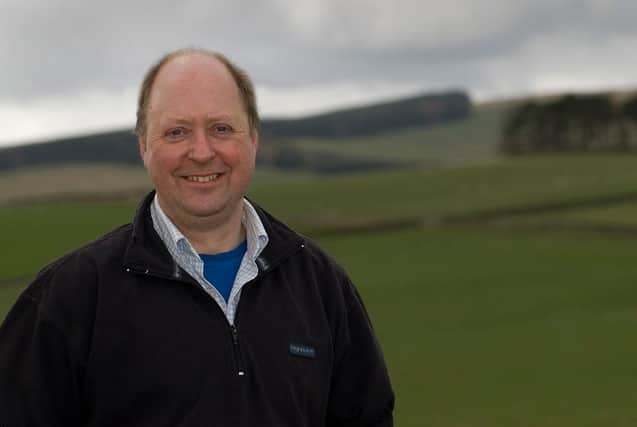Farming’s call to action over methane pledge


Without such action, the ‘soundbite’ solution of a national cull and downsizing livestock production remains the most likely policy alternative, former NFU Scotland president and chair of Ruminant Health & Welfare, Nigel Miller has warned.
However Miller, who also co-chaired the Farming for 1.5° group said that while the methane pledge agreed last week at the COP26 summit was a ‘tough step in a climate change transition marathon’ it was a feasible goal - provided the industry moved quickly.
Advertisement
Hide AdAdvertisement
Hide AdHe said that dairy, beef and sheep production had been firmly in the crosshairs over methane since the UK’s own Climate Change committee had indicated that a reduction in red meat and dairy consumption of 20 per cent was integral to the UK’s plans to reach net zero.
But the pledge to cut methane emissions – which have a far higher warming potential than CO2 but a shorter life span - had to be used to trigger a change in the industry’s mindset and for farming to take control of its share of the problem:
“The management focus has to be all about reducing methane emissions over the next 10 years if dairy, beef and sheep producers are to protect their future,” said Miller.
However, Miller said that achieving the cut without jeopardising production was entirely possible by blending new science with high levels of care – and to even go beyond this reduction target in the long term.
Miller said a key challenge would be to gain an understanding of each farms individual emission levels – and while the Scottish government had announced a £51 million package towards this end, the rest of the UK needed to follow suit.
But a standardised and consistent greenhouse gas calculator which farmers could work from was also required in the current sea of metrics.
Miller said immediate opportunities for cattle and sheep producers to cut methane included driving targeted health improvements to reduce involuntary culling, and increasing longevity in dairy and breeding stock.
“We are also on the threshold of having commercially available feed additives which have reduced enteric methane emissions in some trials by over 30 per cent,” said Miller who added that better genetics also offered medium term hope.
Advertisement
Hide AdAdvertisement
Hide AdHowever, he warned that while methane should be a key focus, reductions in CO2 and nitrous oxide emissions also needed to continue as these accumulated in the atmosphere and only broke down after hundreds and thousands of years respectively.
Miller said that as well as improved livestock health and performance, low-carbon farming practices also included the use of controlled-release fertilisers and slurry acidification – all of which could reduce greenhouse gas emissions from soils, livestock and manure management by 10 Megatonnes of CO2 equivalent by 2050 across the UK.
And he said a recent SRUC study found that the deployment of up to 18 on-farm measures could reduce annual emissions by 4 Megatonnes of CO2 equivalent by 2035.
Comments
Want to join the conversation? Please or to comment on this article.